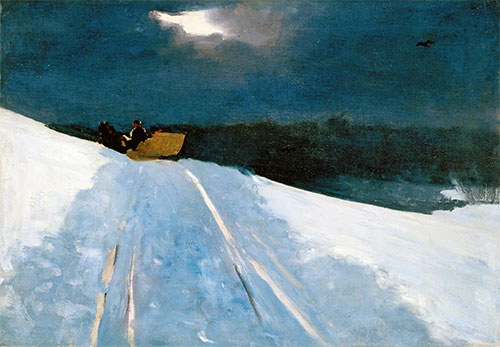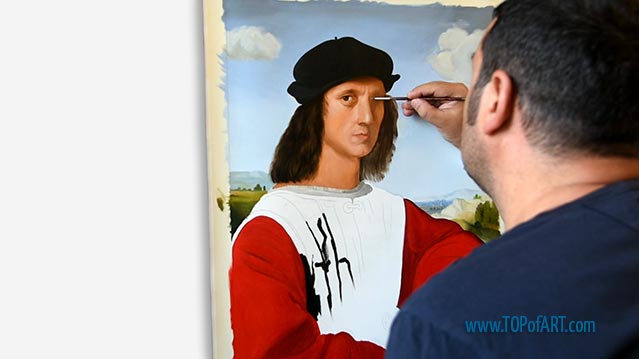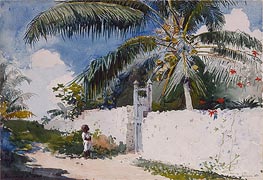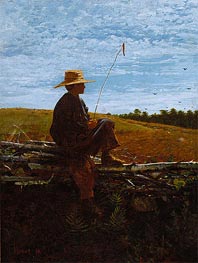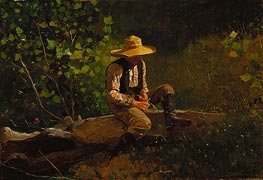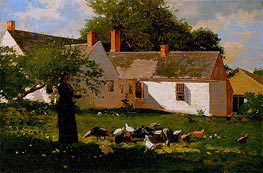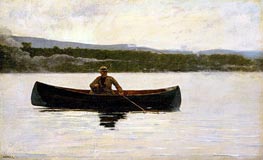Sleigh Ride (Moonlight on the Snow), c.1890/95 Winslow Homer (1836-1910)
Location: The Clark Art Institute Massachusetts USAOriginal Size: 35.7 x 51 cm
Own a museum-quality reproduction of Sleigh Ride (Moonlight on the Snow) by Winslow Homer (c.1890/95), exclusively hand-painted in oils on linen canvas by European artists with academic training. Each masterpiece is created with meticulous craftsmanship, capturing the exceptional quality and authentic brushwork of the original painting.
Oil Painting Reproduction
If you want a different size than the offered
Description
Painted by European Аrtists with Academic Education
Museum Quality
+ 4 cm (1.6") Margins for Stretching
Creation Time: 8-9 Weeks
Creation Process
We create our paintings with museum quality and covering the highest academic standards. Once we get your order, it will be entirely hand-painted with oil on canvas. All the materials we use are the highest level, being totally artist graded painting materials and linen canvas.
We will add 1.6" (4 cm) additional blank canvas all over the painting for stretching.
High quality and detailing in every inch are time consuming. The reproduction of Winslow Homer also needs time to dry in order to be completely ready for shipping, as this is crucial to not be damaged during transportation.
Based on the size, level of detail and complexity we need 8-9 weeks to complete the process.
In case the delivery date needs to be extended in time, or we are overloaded with requests, there will be an email sent to you sharing the new timelines of production and delivery.
TOPofART wants to remind you to keep patient, in order to get you the highest quality, being our mission to fulfill your expectations.
We not stretch and frame our oil paintings due to several reasons:
Painting reproduction is a high quality expensive product, which we cannot risk to damage by sending it being stretched.
Also, there are postal restrictions, regarding the size of the shipment.
Additionally, due to the dimensions of the stretched canvas, the shipment price may exceed the price of the product itself.
You can stretch and frame your painting in your local frame-shop.
Delivery
Once the painting Sleigh Ride (Moonlight on the Snow) is ready and dry, it will be shipped to your delivery address. The canvas will be rolled-up in a secure postal tube.
We offer free shipping as well as paid express transportation services.
After adding your artwork to the shopping cart, you will be able to check the delivery price using the Estimate Shipping and Tax tool.
Museum Quality
The paintings we create are only of museum quality. Our academy graduated artists will never allow a compromise in the quality and detail of the ordered painting. TOPofART do not work, and will never allow ourselves to work with low quality studios from the Far East. We are based in Europe, and quality is our highest priority.
Additional Information
Homer deploys a spare winter palette—deep blues, slate greys, the chalky whites of compressed ice—yet it is far from monochrome. Within the snow alone lie thin skeins of pink and icy blue, inflected strokes that catch the moonlight differently as the ground slopes away. This chromatic restraint has an accumulative effect, heightening the cold and the hush, but also suggesting a momentary shift in atmosphere: the snowfield seems a membrane of changing temperature and hue rather than a static stage. The sky’s opacity—neither fully night nor submissively luminous—keeps the scene on an edge of uncertainty.
Brushwork is economical and telling. The snow’s surface is built from broad, confident strokes, dragging pigment to mimic the grainy crust of winter ice. In the tracks, the paint thins; the brush skates, revealing underlayers that read as refrozen slush. The sleigh and figures are indicated rather than described, with the horse’s head and the driver’s profile emerging from dark impasto. Such abbreviation is not casual sketching but a deliberate distillation. Everything unnecessary is pared away, leaving the essential rhythms of movement and stillness.
Compositionally, the painting is governed by diagonals: the track lines, the slope of the hill, the angle of the sleigh. These converging vectors accelerate our eye forward and upward, only to drop it over the ridge into unseen space. The moon, displaced from the centre, counters this momentum, anchoring the top left and generating a subtle push-pull across the canvas. The birds, small but strategically placed, puncture the sky’s flatness and echo, in miniature, the sleigh’s impending disappearance.
Created in the 1890s, this small, unsigned canvas remained in Homer’s studio until his death and may never have been meant for exhibition. That privacy is palpable; the work feels like a meditation rather than a declaration. In this late phase, Homer often distilled narratives to essentials, distancing himself from overt anecdote. The painting converses with the American turn toward tonalism—the emphasis on atmosphere over detail—but also retains the structural clarity of his earlier realism. It is neither genre scene nor pure mood-piece, but a quiet inquiry into what remains once story is trimmed away.
The result is an image in which solitude is not romanticized but registered as fact. The figures’ fragility—their existence as flickers of paint—suggests both their transience and their perseverance. The sleigh will crest the hill; we will not see it land. The world continues, lit unevenly by the moon, scored by the tracks that point and vanish, a record of passage already being erased by the night’s cold breath.
